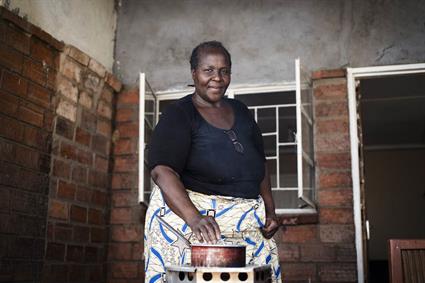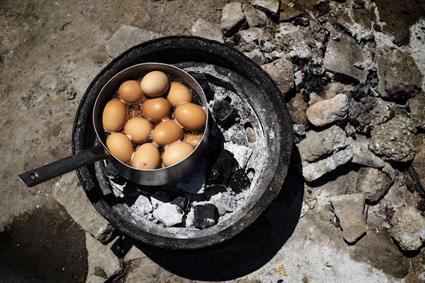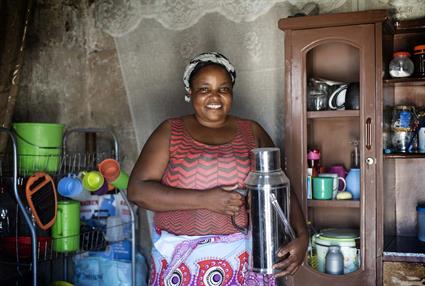

Almost all of the electricity in Zambia is produced from hydroelectric sources. However, droughts caused fluctuations in supply which led to massive power cuts in the year 2016, and even today, weekly power cuts are routine. While the government is seeking to diversify its energy mix by adopting solar energy, the people of Lusaka and Luangwa township have found ways and means to cope with the absence of regular power.
When there is no power, charcoal is what people in Lusaka use for cooking food and warming water. An average household in Lusaka consumes about 1.3 tonnes of charcoal annually. Beth Nveikongo sells charcoal at the market next to Luangwa Township. She has been doing this for almost 10 years and says business is doing well.
You can’t move around Lusaka without seeing huge masses of charcoal beside the roads. The increasing demand for charcoal in the urban areas has led to deforestation in the surrounding areas. Burning the charcoal produces carbon monoxide, which is harmful both to people’s health and the environment.
Selina Phiri has electricity in her house. When there is a power failure, she turns either to a gas stove or a cooking system that works with wood. The residents of the Luangwa Township got their cooking systems through the Lusaka Sustainable Energy Project which was sponsored by a German partner.
These cooking systems were distributed to people through a small loan scheme. They were meant to encourage people to use wood rather than charcoal for cooking. However, many people still choose to use charcoal as it is easier to get hold of in urban areas than wood.
Besides the cooker, Selina Phiri also has a heat-retaining box from the Sustainable Energy Project. Phiri usually puts some paper inside the box to prevent the heat of the pan from melting the box. The box has a cover and can also be used for retaining the cold.
In the absence of a refrigerator, people cool water by putting it in a plastic container and wrapping the container in a piece of wet cloth and hanging it in the shadow. Phiri does the same, in her garden. It is called a ‘Josaka’.
Matilda Njovu boils some eggs in front of her house. She has a small shop where she sells eggs and other food items. Since the house does not have electricity at the moment, Njovu uses charcoal for cooking.
For burning charcoal, many people use car rims. The biggest rims are used when there are a lot of people gathered together like at funerals. In such situations, charcoal is often used even though electricity is available, simply because it is much cheaper.
Njovu’s is one of the very few houses in the area that has a solar panel. For most people here, solar panels are too expensive to own. Njovu uses the electricity produced by the panel to charge her phone and to listen to the radio.
This is what Njovu uses when she needs to keep things cold or warm. Since she doesn’t own a refrigerator, she cannot store food. This means she has to cook for one day at a time or risk losing the leftover food going bad.
In the past, people used to use candles and lamps made of can, kerosene and some wick or string to light up their homes. These days, people use different types of lamps that are either rechargeable or work on batteries. Njovu bought her lamp from the town at an affordable price.
Ironing is often done in the traditional manner. Charcoal is put inside the iron and once it is hot enough, clothes are pressed just as they are with a contemporary iron. Njovu points out that it is important to iron clothes because it kills any parasites that may be hiding in them.













